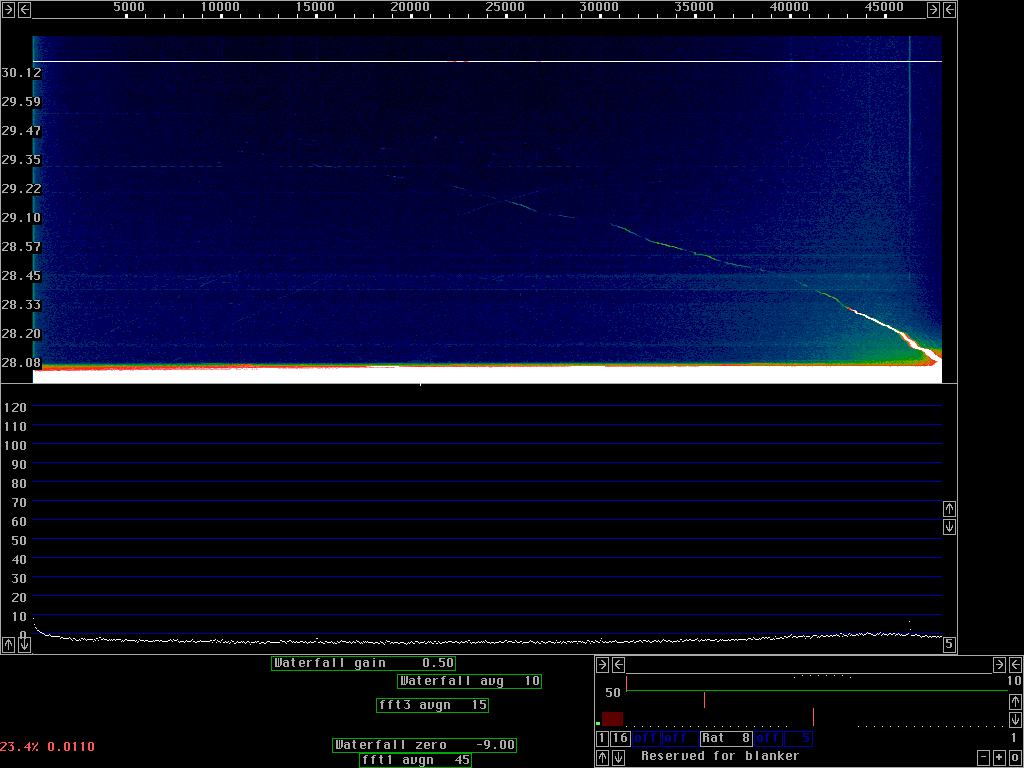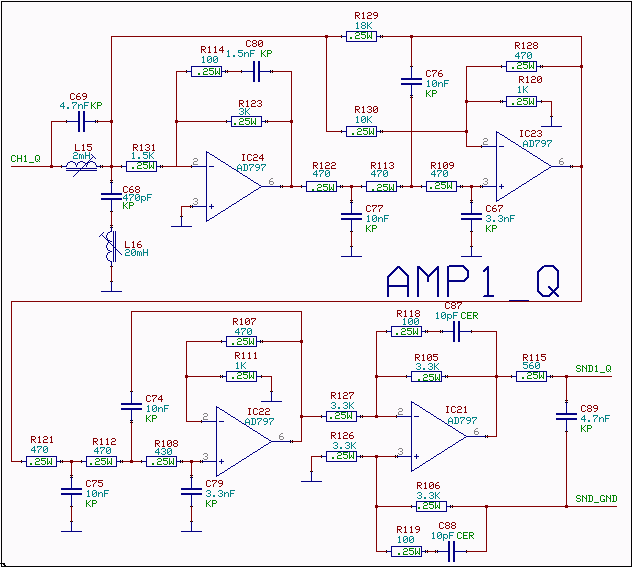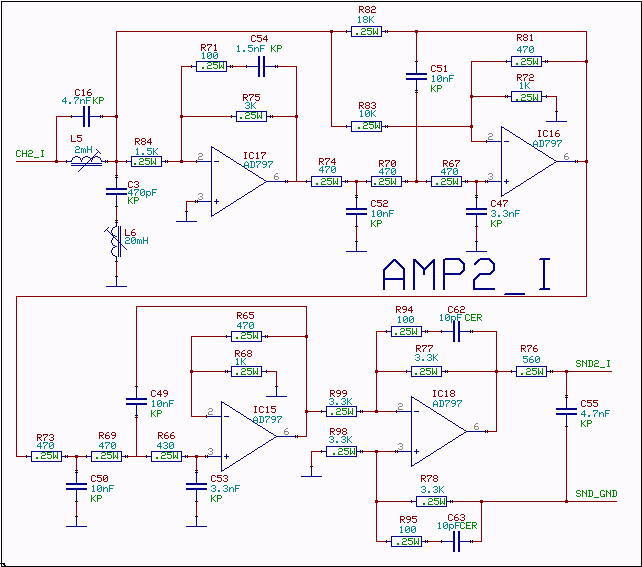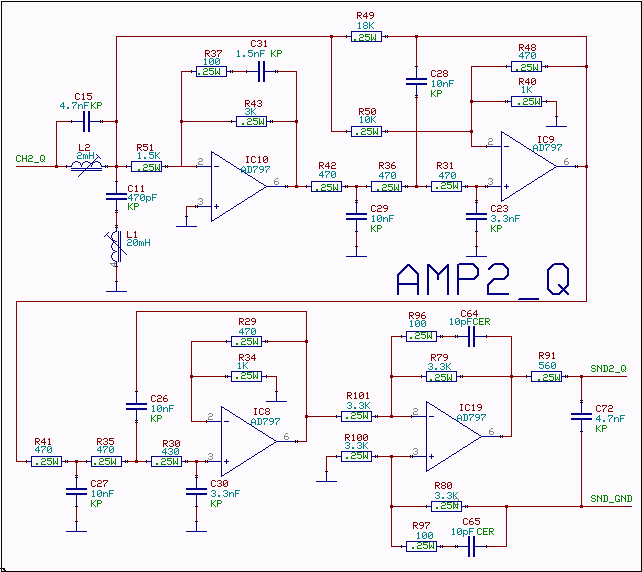Purpose of the anti-alias filterThis filter is part of the 2.5MHz to audio converter.The Delta44 has (of course) its own built-in anti alias filter. Since the board is desined for music aliasing, near 48 kHz is not an issue - the filter is not designed for an extreme cut-off. It is designed for amplitude flatness and phase response at frequencies well below 48kHz. One could perfectly well use the signal directly from the mixer to feed the Delta44, but then it will not be possible to tolerate signals above the level that saturates Delta44 in the region from the passband edge to as far outside (50kHz or so) as required for the RF filters to attenuate the signals. Without anti-alias filter the useful bandwidth is limited to about 43kHz because of aliasing. The anti-alias filter incorporated in the 2.5MHz to audio converter has some gain below 48kHz and attenuation above. The mixer saturates 17dB above the Delta44 which means that the filter extends the dynamic range by 17dB for frequencies more than 1kHz outside the visible passband. (In the frequency range 48 to 49 kHz saturation of the Delta44 is the limiting factor) The attenuation at 47kHz is about 6dB so the useful passband is extended to 47kHz by this filter.
Schematic diagram and frequency responseThe schematic diagram is shown in fig. 1 and the frequency response in fig. 2. |
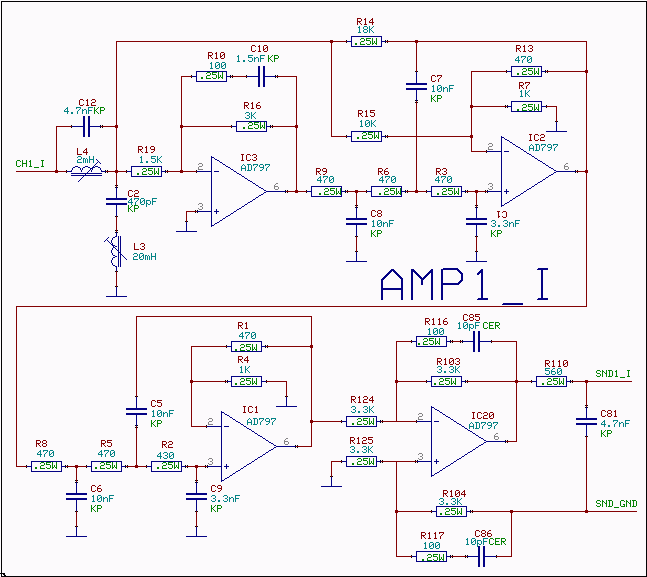
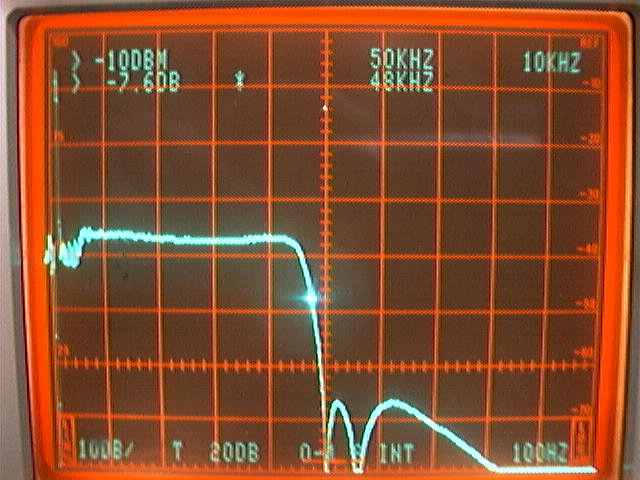
The frequency response at the output of the first stage is shown in fig. 3. Frequencies above 48kHz are attenuated by 6dB or more so there is no risk for signals above 48kHz to saturate this stage which is capable of the same voltage swing as the input stage.
In the schematic diagram the notch filter coils are marked 2mH and 20mH respectively. The details of these coils are as follows:
The "2mH" coil is 100.5 turns of 0.20mm enameled wire on an RM6 core of material N48 with an Al-value of 160. The core is not critical, other materials and Al values will also work fine. The coil has to have a parallel resonance at 55kHz when parallel with 4.7nF.
The "20mH" coil has to have a series resonance with 470pF at 49.2kHz. It is wound with 340 turns of 0.10mm wire, also on an RM6 core with Al=160 made from N48 material. Also for this core the Al-value and material is not critical.
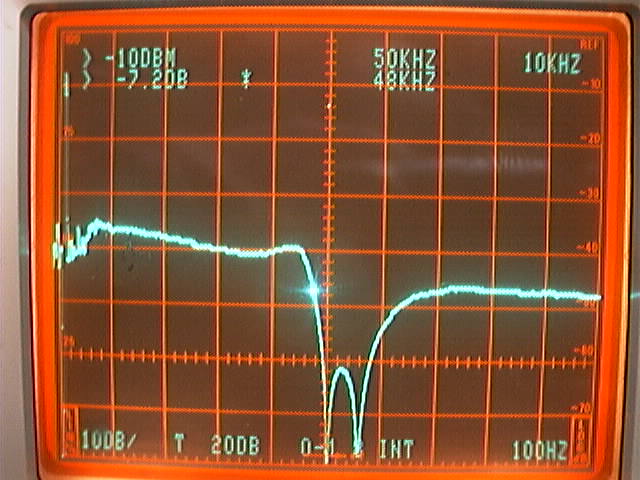
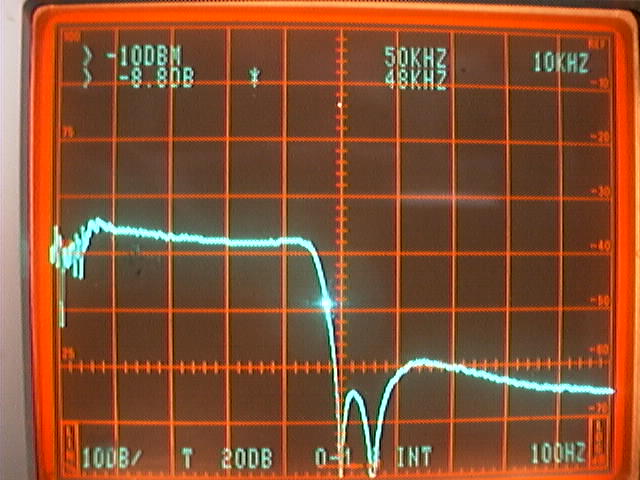
The last stage is a differential amplifier which is needed to reference the output signal to the analog ground of the Delta44. The analog ground must not be current loaded so it can not be connected to the ground of the 2.5 to audio converter.
The level of the alias spur was measured and is listed in table 1.
Freq alias freq level (Mhz) (kHz) (dBc) 2.549 47 -30 2.550 46 -49 2.551 45 -66 2.552 44 -76 2.553 43 -108 2.554 42 -115 2.555 41 <-140 2.556 40 -132 2.557 39 -130 2.558 38 -133 2.559 37 -118 2.560 36 -120 2.561 35 -120 2.562 34 -116 2.563 33 -115 2.562 32 -132 2.563 31 -125 2.564 30 -132 2.565 29 <-140 2.566 28 -125 2.567 27 -134 2.566 26 -114Table 1 Suppression of alias signal.
